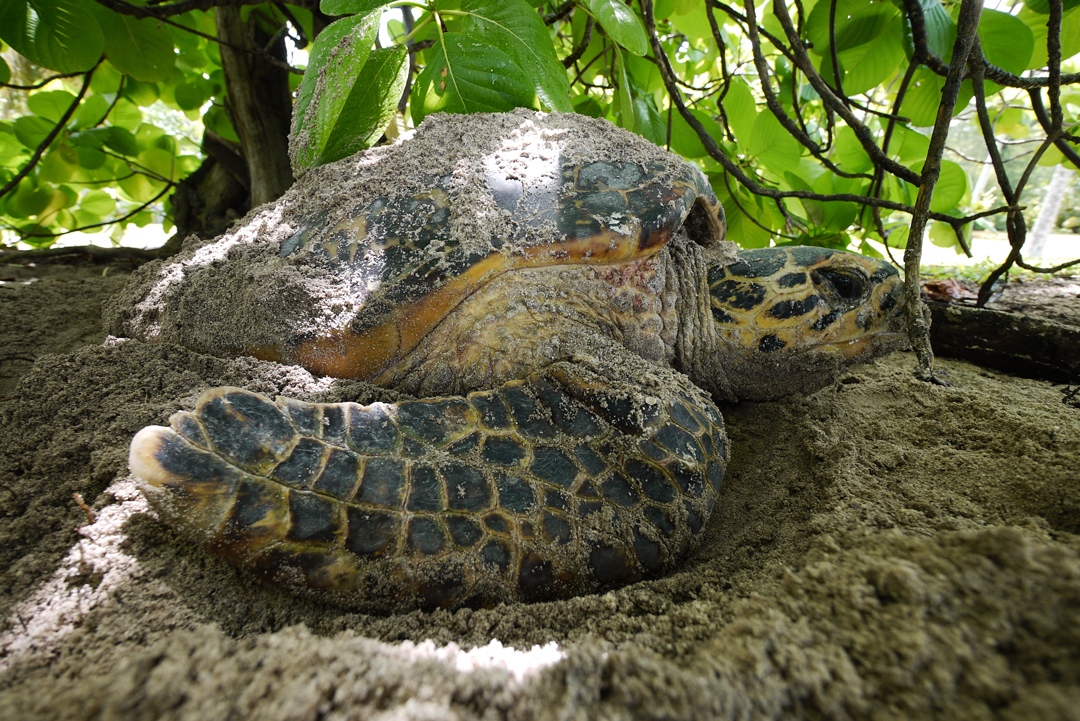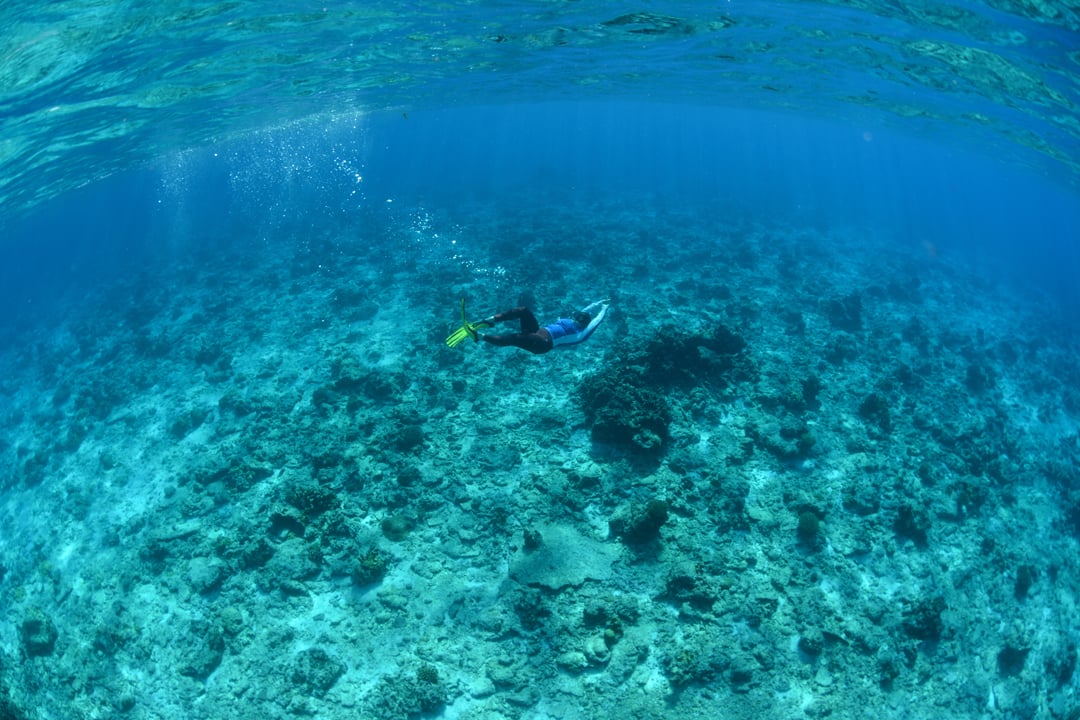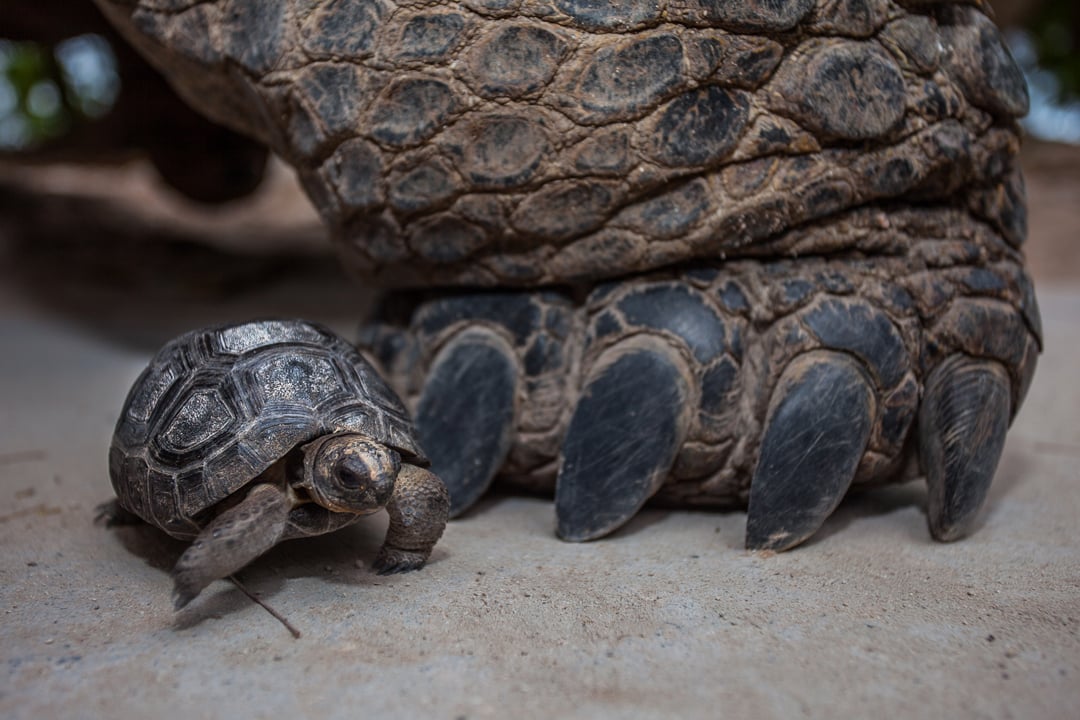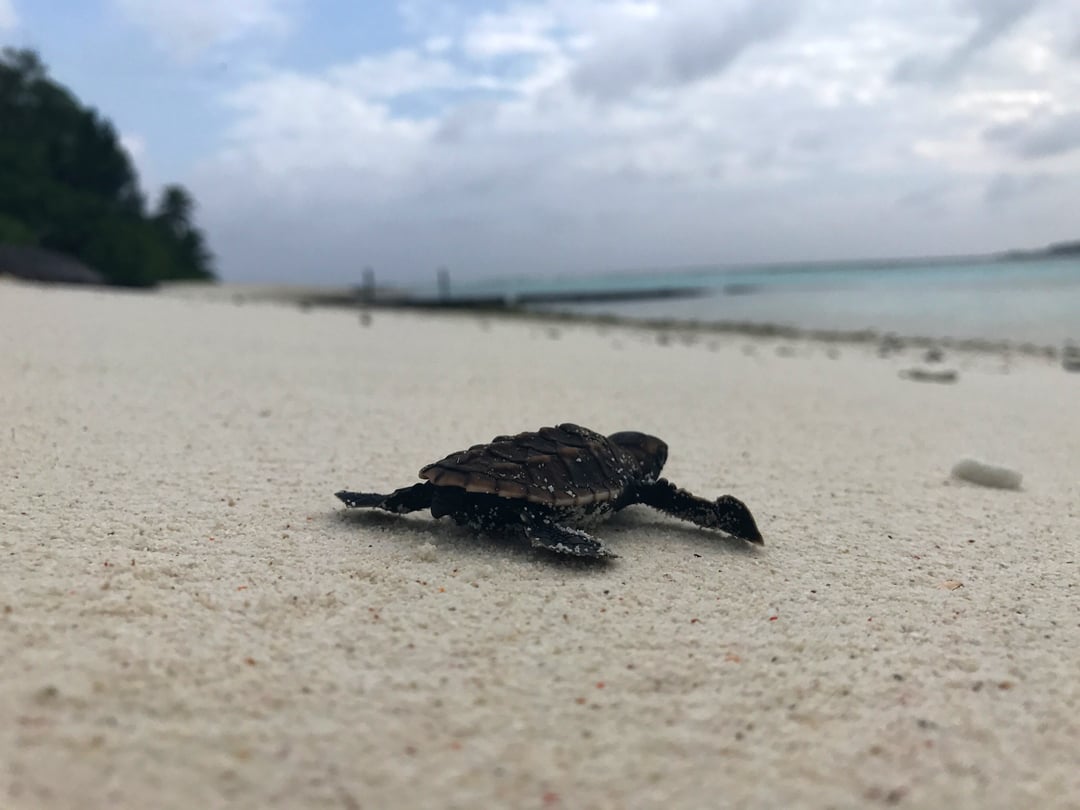Seychellois researcher makes waves in the fight to save threatened turtles and tortoises
By developing and adapting a microscopy-based method from avian science, Seychelles-born PhD student Alessia Lavigne is furthering our understanding of reproductive failure in the nation’s turtle and tortoise populations.
Extinction threatens more than half of the world’s turtles and tortoises. Understanding why some eggs fail to hatch is a crucial step in the race to protect them, but until recently this was hindered by a lack of reliable methods at the microscopic level. Seychellois researcher Alessia Lavigne has successfully developed a microscopy-based method that can provide unequivocal evidence of egg fertilisation, providing vital insights into the underlying drivers of reproductive failure in threatened populations.

A Hawksbill turtle secrets herself in the shade, preparing to lay her clutch of eggs under the dappled protection of the trees on D’Arros Island, Seychelles. Photo © Dan Beecham
2024 marked a real full-circle moment for Seychellois researcher Alessia Lavigne. ‘It’s been exactly 10 years since I was a young student and won a competition to go on the Save Our Seas Foundation’s marine education programme on D’Arros,’ she smiles. ‘And it’s still very unreal to me that, a decade later, I was one of the people teaching the young students that are the new D’Arros Experience participants.’
Alessia had returned to D’Arros Island to collect more samples for her research, which is seeking to understand early reproductive failure in turtles and tortoises. She has spent the past few years collecting and painstakingly analysing the undeveloped eggs of three species found in the Seychelles: the hawksbill sea turtle, the green sea turtle and the iconic Aldabra tortoise. But the idea for the project started long before that. ‘Right after my A-level exams, I managed to get my first job working with sea turtles and terrapins in Seychelles. We would do these routine checks, going back to sea turtle nests to see if everything had hatched. And it was there that the first time I was like – what happened? There were these eggs that hadn’t hatched and there was just a yolk inside. I was told that they’re unfertilised. “But how do we know that?” I would think.’

Depending on the species of sea turtle, a clutch of eggs can contain from around 110 to 160 eggs. Photo © James Lea
Part of the problem, she discovered, was that the methods for assessing hatching failure relied on what could be seen with the naked eye, despite the fact that development can happen at a microscopic level. ‘It turned out to be a huge knowledge gap,’ says Alessia. ‘But I was in the fortunate position that I could wonder whether we could try and avoid making this a gap any more.’
The opportunity to fill that gap came while Alessia was completing her integrated Masters in zoology at the University of Sheffield. Here she met her future PhD supervisor Dr Nicola Hemmings, who introduced Alessia to a lab technique used to understand reproductive failure in birds. This microscopy-based method involves applying a special dye to samples from undeveloped eggs. The dye sticks to and stains DNA, which means that any embryonic cells within the sample will turn blue, allowing scientists to differentiate between fertilised and unfertilised eggs. It lends a deeper insight into why some eggs fail to hatch. ‘At a surface level, there are only two things that can happen,’ Alessia explains. ‘Either the egg was fertilised but the embryo died during development. Or there was never an embryo in the first place. The egg was not fertilised. It’s really important to tell the difference because the causes are very different.’
This method was just what Alessia had been searching for and she embarked on the challenge of applying it in the world of turtles and tortoises, which is now a key focus of her PhD at the University of Sheffield. ‘We weren’t sure if it was going to work!’ she laughs. But thankfully, Alessia was successful. She was able to test the method on eggs from both wild and captive populations of six species, thanks to collaboration with eight conservation partners and islands: the Seychelles Island Foundation (Aldabra); Island Conservation Society (Alphonse Island); Nature Seychelles (Cousin Island); SOSF D’Arros Research Centre (D’Arros Island); Olive Ridley Project (Felicité); Frégate Island Foundation 172 (Frégate Island); Marine Conservation Society Seychelles (Mahé); North Island Company Limited (North Island); and members of the British and Irish Association of Zoos and Aquariums (BIAZA). The results have been published in a new paper, ‘Understanding early reproductive failure in turtles and tortoises’, which has been published in the journal Animal Conservation. Demonstrating that it can reliably detect fertilisation, the method represents a valuable new tool for monitoring reproductive success in threatened populations.

Alessia Lavigne dips below the sea’s surface on a snorkel break during her time at D’Arros Island, where she was stationed to assist with the marine education programme. Photo by Henriette Grimmel | © Save Our Seas Foundation
Alessia’s research has wider implications for the conservation of Seychelles’ turtles and tortoises. More than 50% of all species around the world are threatened with extinction due to the illegal pet trade, marine pollution and habitat destruction. ‘Understanding reproductive failure is becoming more and more important as we try to navigate this world of change,’ Alessia says. But her studies are showing that there is no one-size-fits-all solution. The underlying drivers of reproductive failure differ not just between species, but also between populations of the same species. This means that conservation strategies need to be designed at a population level and need to take into consideration the nuances behind the reproductive failure – and this is why being able to distinguish between the two causes of failure is so important. ‘Embryonic mortality can be caused by many things: incubation conditions, temperature, weather, sand and soil quality. But for fertilisation failure, the causes are completely different. You actually have to look at the adults and determine whether there is a reproductive issue.’

A juvenile Aldabra tortoise is dwarfed by one of the oldest tortoises on D’Arros Island. Photo by Ryan Daly | © Save Our Seas Foundation
Alessia’s work is a step in the right direction, helping conservationists to make informed decisions about how to address reproductive failure in a more targeted way. ‘In conservation, time and money are really limited,’ says Alessia. ‘If you’re just working off guessing games, then you’re wasting resources. I feel this is happening a lot because there is no other choice. I would like to give people that choice.’

